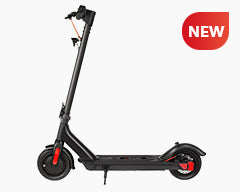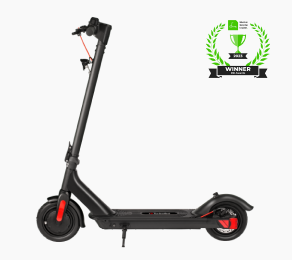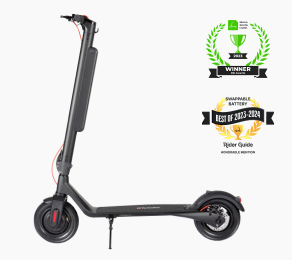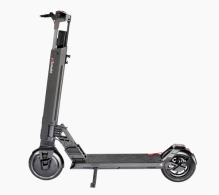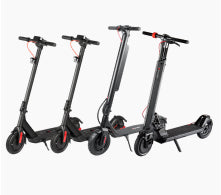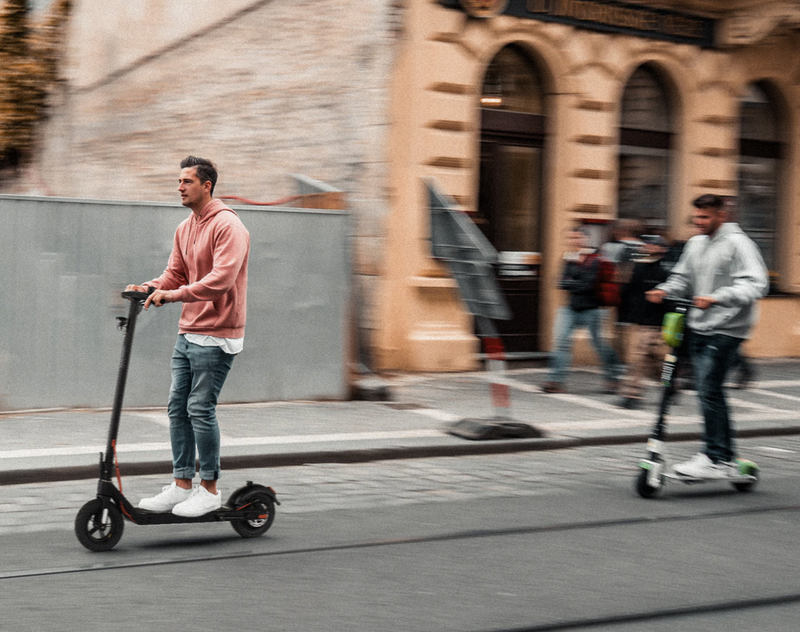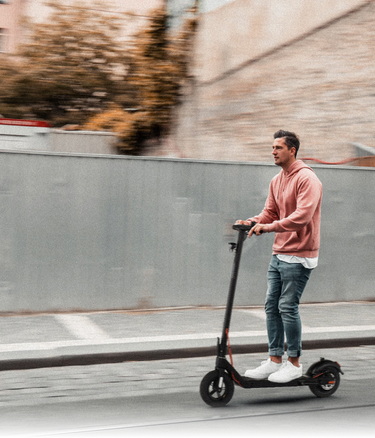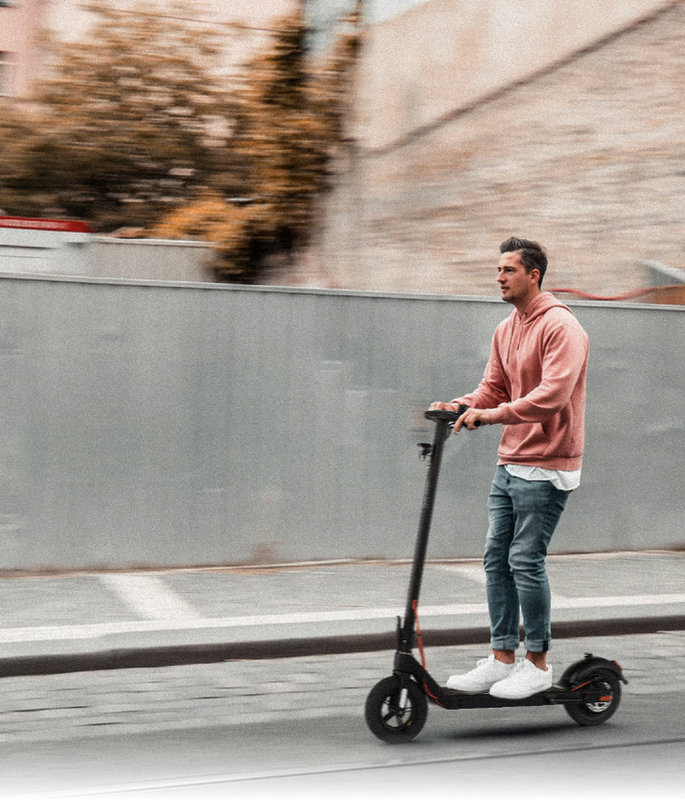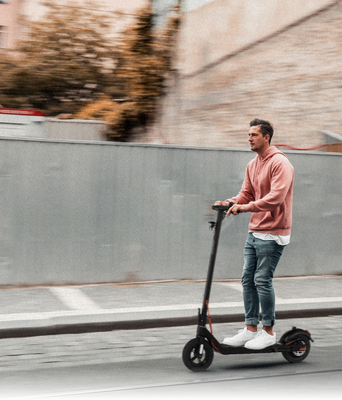Winter riding on electric scooters can be both exhilarating and practical, offering a unique way to navigate chilly urban streets. However, it comes with its own challenges, primarily due to the impact of cold weather on electric scooter performance.
Winter weather can significantly affect the performance of electric scooters. Lower temperatures can lead to reduced battery efficiency, decreased tire traction, and diminished overall ride quality. The cold weather influences crucial components of electric scooters, potentially altering speed, range, and overall functionality. Understanding these challenges is crucial for riders who want to continue using their scooters during the colder months.
Another critical aspect of winter riding is comprehending how your scooter's battery behaves in different temperature ranges. Cold weather can lead to a decrease in battery capacity, reducing your scooter's range and power. Learning how to optimize and maintain your scooter's battery in the winter is essential for a smooth and enjoyable riding experience. We’ll delve into these topics and provide you with practical tips to make your winter scooter rides as enjoyable as ever.

Part 1. What Are the Effects of Temperature on E-Scooter Performance?
A. Reduced Battery Capacity and Implications on Range
One of the primary effects of cold weather on electric scooters is the reduction in battery capacity. Low temperatures can cause lithium-ion batteries, commonly used in electric scooters, to discharge at a slower rate, resulting in decreased overall capacity. Consequently, riders may experience a reduced range per charge. In winter, it's crucial to account for this diminished battery capacity when planning rides to avoid running out of power unexpectedly, especially on longer trips.
B. Voltage Drop and Power Output in Cold Weather
Cold temperatures can lead to a voltage drop in the scooter's battery, impacting the power output. The voltage drop reduces the ability of the battery to deliver a consistent power supply, affecting the scooter's speed and acceleration. Riders may notice slower acceleration and a decrease in top speed during winter rides due to this voltage drop. Highlighting the importance of adapting riding habits and expectations based on the prevailing weather conditions.
C. Consequences of Cold Temperatures on Battery Conductivity and Reactivity
Cold weather affects the conductivity and reactivity of the battery, making it less efficient at transmitting and storing energy. This reduced efficiency can lead to slower charging times and increased energy dissipation, further reducing the scooter's performance.
Understanding these effects allows riders to implement strategies such as pre-warming the battery or storing the scooter in warmer environments to mitigate the impacts of cold temperatures on battery conductivity and reactivity.

Part 2. How to Maximize E-Scooter Range during Winter?
A. Battery Management Techniques for Cold Weather Riding
To maximize the e-scooter range during winter, effective battery management is paramount.
- Start by keeping the scooter at a moderate temperature before your ride, ideally indoors. This helps maintain the battery at a suitable operating temperature.
- Additionally, regularly charge the battery, even if you haven't used the scooter recently, to prevent it from depleting too much.
- During the ride, avoid prolonged stops in the cold as this can expedite battery drainage. Lastly, ensure you're using a charger specifically designed for your scooter to optimize charging efficiency.
B. Riding Techniques to Optimize Range in Low-Temperature Conditions
Efficient riding techniques can significantly extend your scooter's range in colder weather.
- Begin by riding at a consistent, moderate speed rather than frequent acceleration and deceleration, as this can preserve energy.
- Utilize regenerative braking when slowing down, which helps recharge the battery slightly.
- Additionally, reduces wind resistance by adopting a streamlined riding posture, ultimately enhancing energy efficiency and range.
C. Preparing the Storage Environment to Maintain Battery Health
When not in use,
- Store your e-scooter in a temperate environment, preferably indoors. Cold storage can harm the battery, leading to reduced efficiency and range.
- If storing for an extended period, partially charge the battery and then disconnect it to avoid overcharging or complete depletion.
- Consider investing in a scooter cover to shield it from cold temperatures and moisture, ensuring optimal battery health and performance during winter rides.

Part 3. How to Choose an Electric Scooter for Winter Riding?
When selecting an electric scooter for winter riding, considering specific features is crucial to ensure a safe and reliable experience in colder and potentially adverse weather conditions. Here are key features to prioritize:
- Water Resistance: Opt for electric scooters with a high degree of water resistance. Winter often brings rain, snow, or slush, and having a scooter with waterproof or water-resistant components can protect the scooter from damage and ensure its longevity.
- Powerful Motors: Look for scooters with powerful motors that can handle the added resistance of riding on snow or icy surfaces. A robust motor ensures you have enough power to navigate through varied winter terrains, maintaining a steady speed and performance.
- Pneumatic Tires: Choose electric scooters equipped with pneumatic (air-filled) tires. Pneumatic tires provide better traction and shock absorption, crucial for maintaining stability and control on slippery or uneven winter roads.
- Strong Brakes: A reliable braking system is vital for safety in winter conditions. Opt for electric scooters with strong and responsive brakes, preferably disc brakes, as they offer better stopping power even in wet or icy conditions.
- Good Battery Capacity: Prioritize scooters with a larger battery capacity. Cold weather can reduce battery efficiency, making it essential to have ample battery capacity for extended rides. A higher capacity allows you to maintain a satisfactory range despite the colder temperatures.
These essential features play a pivotal role in ensuring your safety and enjoyment while riding an electric scooter during the winter season.
The TurboAnt V8 electric scooter embodies these essential features, making it an ideal choice for winter riding. With its powerful 450W brushless motor, water-resistant design, pneumatic tires, and dual 7.5 Ah batteries providing a 50-mile range, the TurboAnt V8 ensures a safe and enjoyable ride in the cold weather. Its robust brakes, high load capacity, quick folding mechanism, climb capability, and rear suspension further enhance its performance and comfort, making it a reliable companion for winter excursions.
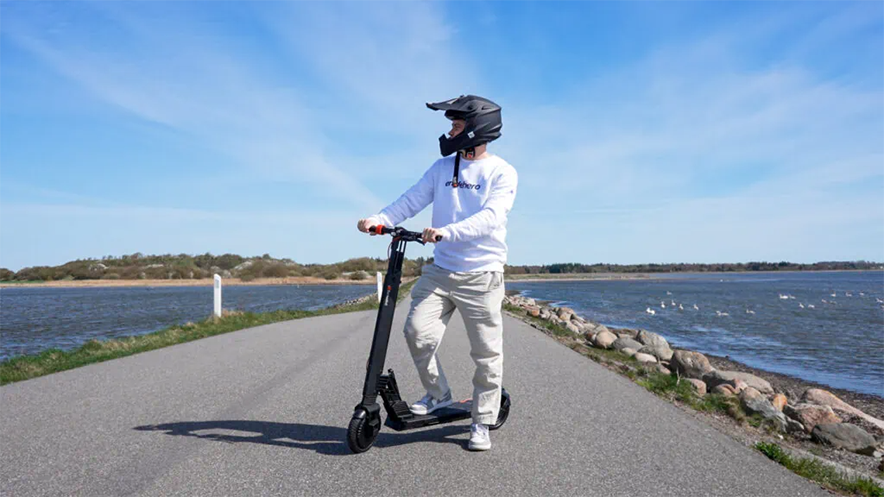
Part 4. How to Ride Electric Scooters During Winter?
Riding an electric scooter during winter can be a thrilling adventure if approached with caution and preparedness. Here are essential tips to ensure a safe and enjoyable ride during colder months:
A. Dressing Appropriately for Cold Weather Rides
Dressing appropriately for winter rides is critical to stay warm and comfortable during your scooter adventures. Layering is key to retaining body heat, allowing you to adjust your warmth levels as needed. Invest in waterproof gear like jackets, pants, and gloves to repel rain or snow. Insulated footwear and head protection are equally important, offering warmth and shielding you from the winter chill.
B. Investing in Quality Safety Equipment with a Focus on Visibility
Visibility is crucial, especially during the darker, shorter days of winter, Opt for safety gear that enhances your visibility to other road users. Reflective clothing is a valuable addition, significantly improving your presence on the road, especially during low-light conditions. Bright and vivid colors amplify your visibility, ensuring others can easily spot you. Equipping your scooter with high-quality front and rear lights, along with supplementary LEDs, further reinforces your visibility and safety.
C. Planning Trips and Protecting the Battery during Winter Rides
Plan your trips carefully, considering the limited daylight and potential weather challenges. Choose routes with well-maintained paths or roads, avoiding areas prone to heavy snow or ice buildup. Keep your scooter's battery protected by ensuring it's fully charged before heading out and avoiding extended stops in cold weather. If making longer journeys, plan your route with charging stations in mind to keep your battery at an optimal level.

Part 5. How to Store and Maintain Your Electric Scooters in Winter?
Winter often calls for a break in scooter riding, and proper storage is crucial to maintain the longevity and performance of your electric scooter. Follow these steps to ensure your scooter remains in optimal condition during the colder months:
A. Guidelines for Storing E-Scooters in the Right Conditions
Proper storage plays a vital role in preserving the integrity of your electric scooter. Consider these guidelines for storing your scooter in the right conditions:
- Indoor Storage: If possible, store your scooter indoors, in a dry and temperate environment, away from the cold and dampness. This helps prevent exposure to harsh winter elements that could potentially damage the scooter.
- Elevated Position: Store the scooter in an elevated position, off the ground, to avoid contact with moisture and cold surfaces, which can lead to corrosion or freezing.
- Covering: Use a scooter cover to protect it from dust, moisture, and potential scratches, keeping it in pristine condition for the next riding season.
B. Recommendations for Preparing E-Scooters for Winter Storage
Proper preparation before storage is key to ensuring your scooter remains in good shape during the winter break. Here are recommendations to prepare your scooter for winter storage:
- Clean Thoroughly: Clean the scooter, removing any dirt or grime, and apply a protective layer of wax to prevent rust and corrosion.
- Battery Care: Charge the battery to about 50-60% before storage to prevent over-discharge. If stored for an extended period, recharge it periodically to maintain its health.
- Tire Maintenance: Inflate the tires to the recommended pressure to prevent flats during storage. Check for any damage and address it before storing.
C. Ensuring a Smooth Transition Back to Riding after the Winter Break
As winter comes to an end, prepare your scooter for a seamless transition back to riding:
- Check for Maintenance Needs: Inspect the scooter thoroughly for any signs of wear and tear. Address any necessary repairs or maintenance before taking it out for a ride.
- Battery Rejuvenation: Charge the battery fully and conduct a short test ride to ensure the battery's health and performance. If needed, consider replacing an old or deteriorated battery.
- Tire Inspection: Check the tires for proper inflation and any signs of damage. Inflate them to the recommended pressure and replace them if necessary.
Riding an electric scooter during winter can be a rewarding experience, provided you are well-prepared and informed about the unique challenges that cold weather brings.
To optimize winter riding, investing in an electric scooter designed for cold weather is essential. Features like water resistance, powerful motors, pneumatic tires, strong brakes, good battery capacity, and safety equipment play crucial roles.
Responsible usage and maintenance practices during winter are also essential for both rider safety and scooter longevity. Proper dressing, adherence to traffic rules, and regular maintenance contribute to a safe riding experience. With the right knowledge, equipment, and maintenance, you can venture out confidently and enjoy the crisp air and quiet streets. Remember, safety and responsibility are paramount, ensuring a fulfilling winter riding experience for all. Stay warm, stay safe, and keep riding!
